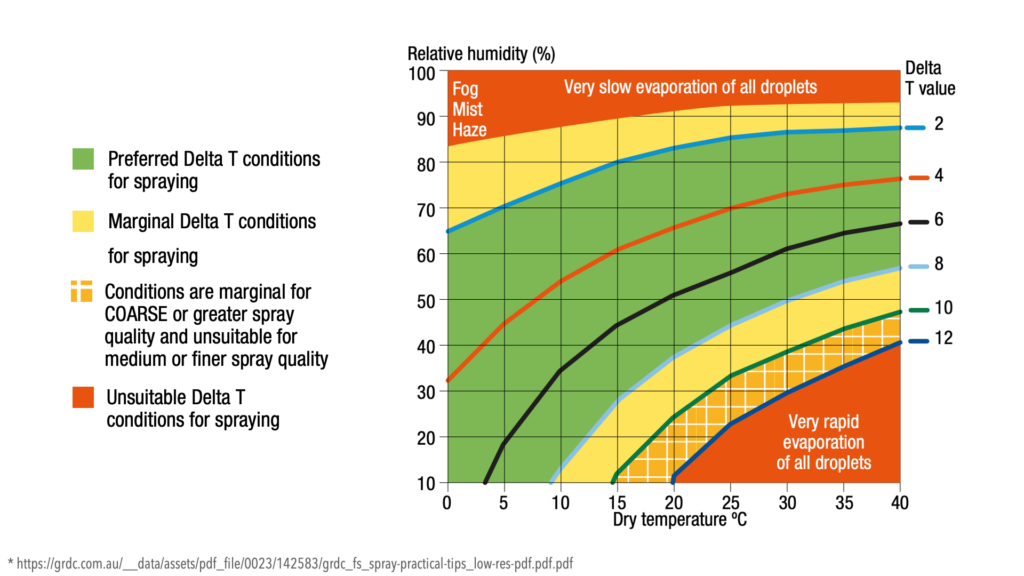Written by Mike Abram
When prices of nitrogen rocketed ahead of last season, and supply looked anything but assured for a time, there was an understandable interest and move towards alternative sources of nitrogen fertiliser.
One of those was foliar nitrogen with plenty of growers either trialling or increasing its use.
Foliar feeding, particularly of trace nutrients, is, of course, nothing new. It offers an alternative, potentially more efficient and much quicker route to get nutrients into the plant. But results can also be inconsistent and variable.
Much of that is potentially down to factors around application, suggests Joel Williams from Integrated Soils. He has recently launched a four-week, 10-lecture online masterclass into foliar feeding, especially foliar nitrogen.
“The goal is to avoid the spray and pray approach,” he says. “It’s not just about filling up the tank, throwing in some nutrients and going – there are a lot of things to consider.
“Foliar nutrient sprays have the perception of being rather inconsistent, and I think that’s because attention to detail on the design of the application and the spray conditions is not there.”

To help overcome that, Mr Williams has developed the FACE framework. FACE stands for formulation, application, crop and environment – the key aspects to consider when applying foliar nutrients. For each he has some recommendations for optimum performance, with formulation and environment particularly crucial.
“Try to follow these recommendations as best you can to optimise applications and minimise variability,” he suggests.
Formulation
Before you even consider adding nutrients to the tank, think about water quality, Mr Williams says. “It is very clear that water quality can have big impacts on pesticide efficacy, and the same is true of nutrient uptake.
“For optimised foliar nutrient sprays use as clean water as possible – rainwater is ideal.”
An alternative is using a process called reverse osmosis to de-mineralise or de-ionise water by pushing it under pressure through a semi-permeable reverse osmosis membrane. This removes salts and other contaminants that could lock up the nutrients.
While kits are expensive, some Australian and Canadian farmers have found it easily pays for itself within a couple of years just on savings on herbicides, Mr Williams says.
Optimal pH of the spray solution should be between 5 and 5.5, and certainly no more than six, he adds. “Optimal absorption of nutrients happens under acidic conditions.”
Water hardness is a well-known issue with some pesticides, and high amounts of highly charged ions such as calcium and magnesium can lock up nutrients. A review of literature suggests if water hardness is reaching 250ppm of calcium carbonate or equivalent it’s worth looking trying to clean that water up, if possible, with reverse osmosis or diluting with a cleaner source, he suggests.
The same applies with bicarbonate, with Mr Williams suggesting a maximum of 500 ppm, and also salt, with a guide figure of less than 50 milliSiemens/cm for salinity.

Activator adjuvants that either alter the behaviour, activity or availability of the nutrient compounds, or utility adjuvants that change the water properties can also be helpful.
Examples of activator adjuvants include stickers helping stick the spray solution to the leaf, spreaders that maximise the surface area of contact for absorption, penetrants, such as fulvic acid or amino acids, which help improve uptake, and humectants which slow the drying of the droplet.
There are two main water conditioners – ammonium sulphate and citric acid. “Both are good,” Mr Williams says. “You don’t need huge amounts depending on water quality. The acid or sulphate binds to the cations to prevent them from binding to the compound of interest.”
Application
As with any foliar spray, application will be crucial to maximising effectiveness. With foliar nutrient sprays, choose the appropriate combination of nozzles, pressure and forward speed to achieve an appropriate droplet size for it to reach the canopy, and stay on the leaf.
Water volume is important – high enough to maximise coverage, but not too much that the spray solution runs off the leaf.
The other key is to try and coat both sides of the leaf – a little bit of wind to rustle the crop can be helpful in achieving this – as nutrient uptake (see panel) is through stomata, which are mostly on the underside of the leaf, as well as targeting the upper surface of the leaf for uptake through the cuticle and leaf hairs.
Crop
As well as obvious different canopy structures between crops, there are other crop-specific characteristics that can impact on performance.
Obviously, there has to be enough leaf area to spray, Mr Williams points out, which means letting crops recover enough from grazing to capture the spray. “That might be a week to 10 days after grazing, although in New Zealand some growers are going after just four days and still seeing effectiveness.”
If the plant is stressed from drought, temperature or pest or disease attack, uptake will be reduced, he adds.
Younger leaves tend to be more responsive to foliar-applied nutrients, with quicker uptake than older leaves, which are a bit more waxed. “The same is true of different plant types – brassica leaves tend to be more waxy than cereals and harder for nutrients to penetrate. For these I would emphasise using stickers and penetrant adjuvants to get the nutrients through that waxy layer.”
There are varietal differences. “Some varieties do better under low or high input type systems, or different growing conditions and the same is true of foliars, with some more responsive than others.
“That’s something we could perhaps be breeding for. If we bred more specifically for this we could get higher nitrogen use efficiency and lower nitrogen requirements for crops.”
Environment
If there is one factor to pay particularly close attention to when spraying foliar nutrients it is relative humidity. “You want relative humidity to be high to keep the cuticle layer dynamic and permeable and the stomata open.”
The magic number for relative humidity is 70% and above for optimising stomatal opening, he says. Research consistently shows greater uptake at higher relative humidity.
High temperatures should be avoided with an absolute maximum of 28C, but preferably no more than 25C advised.
“Your optimum spray window is likely to be either early morning or later afternoon when relative humidity tends to be highest. High light intensity can also increase uptake.”
On the leaf you want the droplet to slowly dry out, but not too rapidly. Water slowly evaporating from nutrient droplets has a positive in making the nutrient more concentrated and therefore creating a gradient to make absorption into the leaf easier, but if it happens too quickly the solution can crystallise leading to poor uptake.
There are two factors in play here – the combination of relative humidity and temperature drives evaporation rate, while the point of deliquescence of the nutrient salt drives how quickly the salt starts to crystallise.
The point of deliquescence (POD) is the relative humidity at which a hygroscopic material, like a fertiliser granule, can take enough water out of the air to dissolve into a solution, or looking at the other way, when it will start to crystallise.
That relative humidity point changes for different nutrient salts (see table). Some are relatively low like calcium chloride and magnesium chloride (around 33%), while others are very high like potassium sulphate (98%). When relative humidity is above that point the salt solution stays in solution and there should be good uptake, while below it, crystals start to form with poorer uptake.
Mixing different salts, however, tends to bring down the mixture’s POD, usually by more than you would expect just from averaging the constituents, Mr Williams says. “Practically though it could be worth adding a kilo of a low POD material to bring the POD of the whole mixture down.”
Evaporation rate is defined by a metric called Delta T – effectively a combination of relative humidity and temperature. High Delta T means faster water evaporation. It typically has more relevance in hotter climates, Mr Williams says, but might be a useful indicator in hotter summers in the UK.
“You’re looking to spray when Delta T is between two and eight (see chart). When you’re in that band you have good humidity [for stomatal opening] and slow drying of the droplet and will help maximise uptake.”
Where Delta T is getting or is too high, you can mitigate its effects by increasing water rates and using coarser nozzles, while at lower Delta T values, do the opposite and use lower water volumes and finer nozzles. Stickers can help keep the droplets on the leaf for longer, he says.
Practical application advice for foliar nutrient applications
- Use as clean water as possible – rainwater
- Water pH 5-5.5, with low hardness or bicarbonate
- Add chelators and / or carbon source to neutralise nutrient charge and increase uptake through a negatively charged leaf surface
- Cover both sides of the leaf to maximise stomatal and cuticular uptake
- Aim to spray when humidity is above 70%
- Check Delta T is 2-8 especially in hot weather when spraying
- Avoid spraying when crop is stressed
How are nutrients taken up by leaves?
While roots are designed to uptake nutrients and are the dominant pathway, it is possible for nutrients to be taken up through the leaves.
There are six potential pathways for uptake through the leaves, but three are thought to be key – through the cuticle, or leaf skin, through the stomata – the pores that control the rate of gas exchange and are critical for photosynthesis, and through tiny leaf hairs called trichomes.
Researchers traditionally believed that nutrient uptake was through micropores in the cuticle, which open under high humidity, Mr Williams explains. “The same is also true of stomata.”
In both cases the uptake is passive, relying on a gradient moving the nutrient from high concentration outside the leaf to a low concentration inside the leaf.
Environmental conditions that encourage these micropores or stomata to open and close are therefore important to uptake, with humidity, temperature, light, plant water status and carbon dioxide all factors.
But it might not be just these pores that are important, Mr Williams says. A recent review by Victoria Fernandez from the University of Madrid suggests that in higher humidity or when the leaf is wet, water channels are created from outside the leaf through the cuticle. “Therefore nutrients can move via this water bridge through the cuticle into the plant,” he explains.
Uptake might also be through the leaf hairs, at least in some plants, he adds. “For example, a study in sunflowers has shown that at the base of these hairs there are cells that are very permeable and receptive to taking up nutrients. Nutrient droplets will be caught by these hairs and run down to the base, where those cells can absorb them.”





